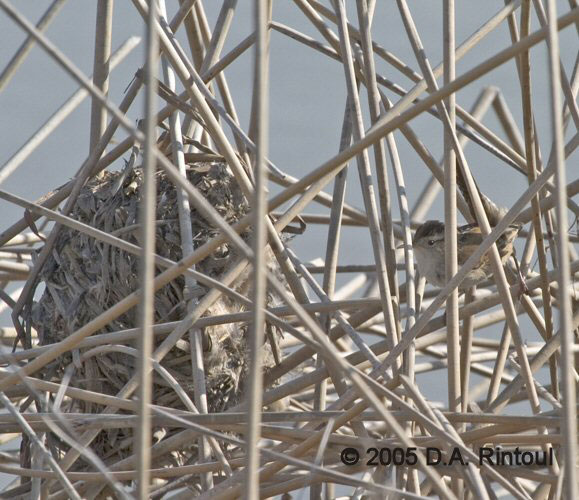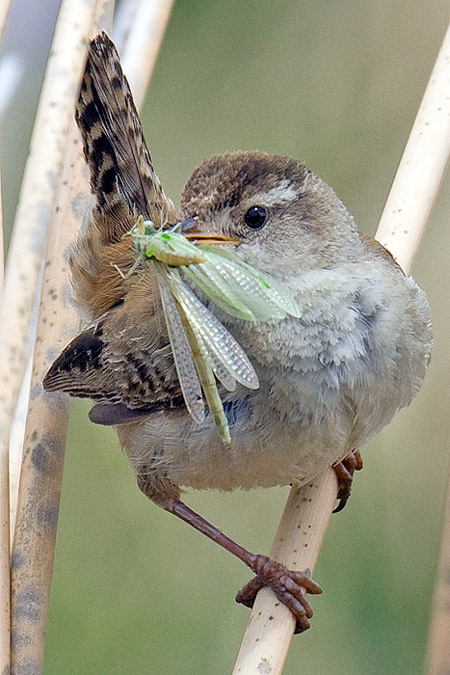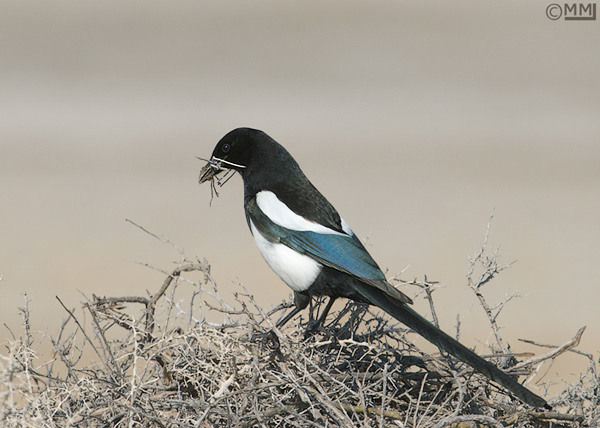|
|
|
Introduction |
Secluded Place |
Scrape | Mound | Burrow | Cavity | Plate |
Platform |
Pendant | Sphere |
Cup | Host | |
Sphere-shaped Nests
The
sphere-shaped nests of Marsh Wrens provide a good hiding place for
new-born wrens in a busy marsh environment. Black-billed
Magpies will built substantial nests often with a canopy which
serve them will for nesting and, when abandoned, for other birds
as shelter or a base for their nests.
|
|
 Marsh
Wrens build their coconut-shaped nests by binding bulrush or
cattail stems together then weaving an outer nest using strips from
sedges or cattails that have been soared in water. Leaving a
side hole as an entrance, the female will line the actual nest
with softer materials such as grass, shredded plants and feathers,
while the male builds other nests as dummies to distract potential
predators from the "real" nest. Marsh
Wrens build their coconut-shaped nests by binding bulrush or
cattail stems together then weaving an outer nest using strips from
sedges or cattails that have been soared in water. Leaving a
side hole as an entrance, the female will line the actual nest
with softer materials such as grass, shredded plants and feathers,
while the male builds other nests as dummies to distract potential
predators from the "real" nest.
Three to ten eggs (usually 5 or 6) are
incubated by the female for 13 to 16 days. The young are
ready to fly about 11 to 16 days after hatching.
|
Marsh Wren nest by
Cave Reintoul
İDavid A. Rintoul
|
|
 The
location of Marsh Wren nests -- in a marsh -- provides lots
of food from insects immerging in the spring just in time to feed
hungry chicks. The
location of Marsh Wren nests -- in a marsh -- provides lots
of food from insects immerging in the spring just in time to feed
hungry chicks.
|
Marsh Wren with a
bug, by Kendall Brown
İKendall Brown
|
|
 Black-billed
Magpies build 2 to 4 foot high, bulky nests from coarse sticks
held together at the bottom by mud. They usually have a
canopy over the top with entry holes on the sides and a nest cup
inside made of rootlets, fine plant material and horse hair.
These nests are usually build on horizontal limbs close to the
trunk by the female with material provided by the male -- this is thought
to be part of a mating ritual. These substantial structures,
when abandoned, can be use by other bird for shelter or for
nesting. Black-billed
Magpies build 2 to 4 foot high, bulky nests from coarse sticks
held together at the bottom by mud. They usually have a
canopy over the top with entry holes on the sides and a nest cup
inside made of rootlets, fine plant material and horse hair.
These nests are usually build on horizontal limbs close to the
trunk by the female with material provided by the male -- this is thought
to be part of a mating ritual. These substantial structures,
when abandoned, can be use by other bird for shelter or for
nesting. The 7 to 13 eggs
are incubated for 16 to 18 days. |
Nest Building, by
Mia McPherson
İMia McPherson
|